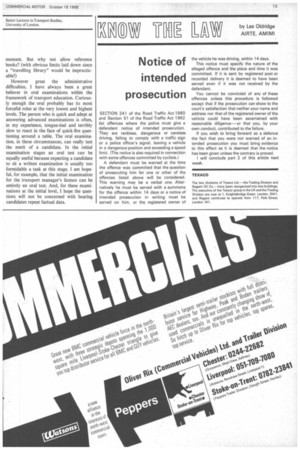N otice of
Page 75

If you've noticed an error in this article please click here to report it so we can fix it.
intended prosecution
SECTION 241 of the Road Traffic Act 1960 and Section 51 of the Road Traffic Act 1962 list offences where the police must give a defendant notice of intended prosecution. They are reckless, dangerous or careless driving, failing to comply with a traffic sign or a police officer's signal, leaving a vehicle in a dangerous position and exceeding a speed limit. (The notice is also required in connection with some offences committed by cyclists.)
A defendant must be warned at the time the offence was committed that the question of prosecuting him for one or other of the offences listed above will be considered. This warning may be a verbal one. Alternatively he must be served with a summons for the offence within 14 days or a notice of intended prosecution in writing must be served on him, or the registered owner of
the vehicle he was driving, within 14 days.
This notice must specify the nature of the alleged offence and the place and time it was committed. If it is sent by registered post or recorded delivery it is deemed to have been served even if it was not received by the defendant.
You cannot be convicted of any of these offences unless this procedure is followed except that if the prosecution can show to the court's satisfaction that neither your name and address nor that of the registered owner of the vehicle could have been ascertained with reasonable diligence— or that you, by your own conduct, contributed to the failure.
If you wish to bring forward as a defence the fact that you were not warned of an intended prosecution you must bring evidence to this effect as it is deemed that the notice has been given unless the contrary is proved.
I will conclude part 2 of this article next week,
























































































































